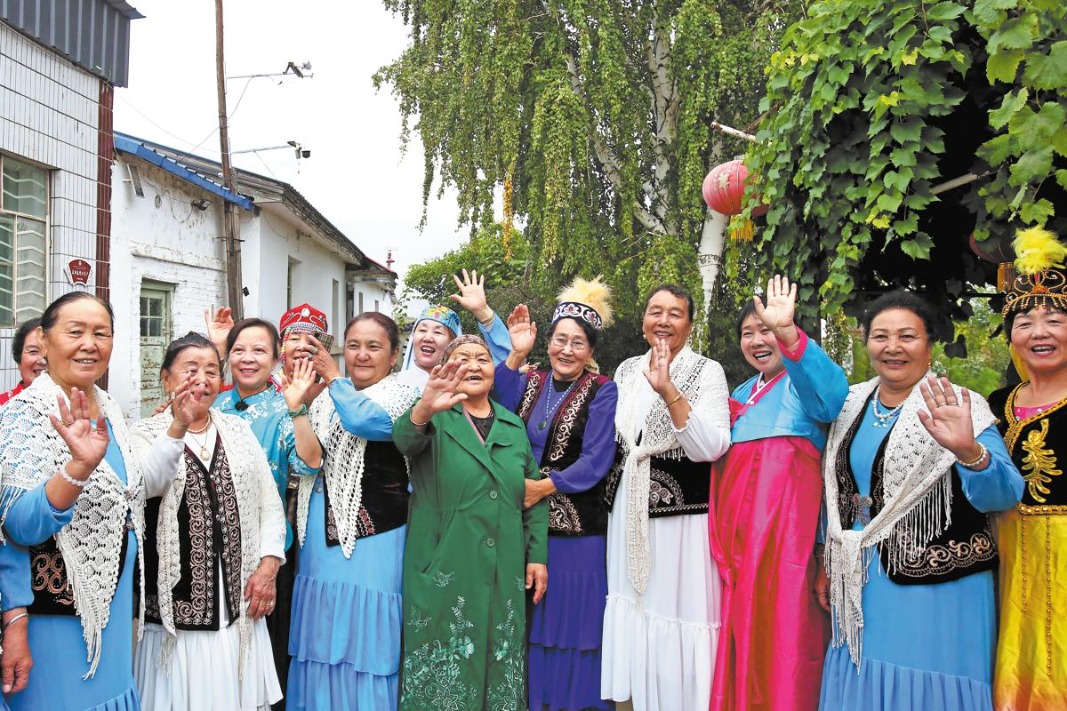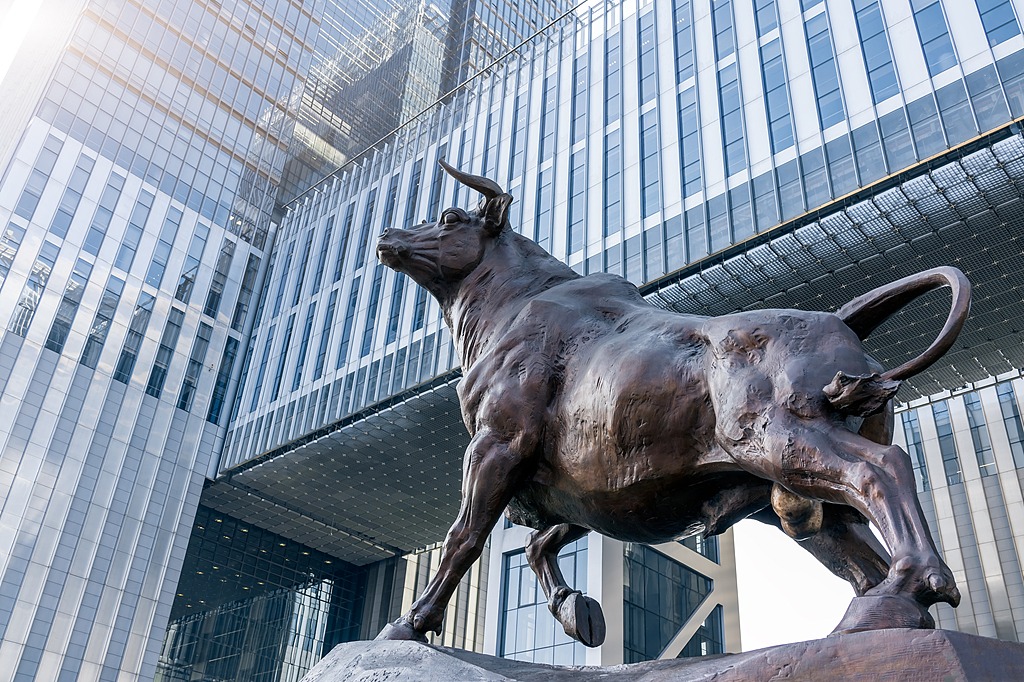CPC Guidelines for Governing Xinjiang in the New Era: Practice and Achievements
The State Council Information Office of the People's Republic of China September 2025

X. Greater Synergy for Xinjiang's Development
China's great achievements in the new era have been forged through the hard work of the Party and the people. The historic success in all undertakings in Xinjiang and all the epoch-making changes are fundamentally attributed to the strong leadership of the CPC Central Committee with Xi Jinping at its core. It is the result of unconditional assistance from all parts of the country and the hard work of the people of all ethnic groups in Xinjiang.
The Party and the country's solid support — the foundation for Xinjiang's development. The CPC's firm leadership is the greatest political strength for Xinjiang to overcome all challenges and press forward on the path of Chinese modernization. The CPC Central Committee with Xi Jinping at its core has given utmost attention to Xinjiang's development by setting the Party's guidelines for governing Xinjiang in the new era, delineating Xinjiang's five strategic roles in national development, and issuing policy measures for improving people's wellbeing, strengthening social cohesion, and promoting high-quality economic and social development in the region. The Party central leadership has ensured that fundamental principles are upheld in the work related to Xinjiang while breaking new ground.
Under the unified leadership of the CPC Central Committee, the whole Party and the entire nation have adopted a unified approach to national development through overall planning and coordinated action. In the case of Xinjiang, the country has put in place mechanisms under which central departments provide policy support and guidance, provincial and municipal governments cooperate and provide assistance, and Xinjiang's government plays a principal role. These mechanisms have created great synergy for the autonomous region's development.
The central government provides special support for Xinjiang in terms of funds, projects, preferential policies, industry support, and investments. Since 2012, it has allocated more than RMB4 trillion in transfer payments to Xinjiang, including nearly RMB543.48 billion in 2024 alone.
The firm leadership of the Party Central Committee and its solid support provide fundamental guidance for Xinjiang-related work in the new era, giving it a strong impetus.
Notable improvements in paired assistance to Xinjiang. Paired assistance is a strategic policy measure to maintain lasting stability, peace and security in Xinjiang. Central Party and government departments, state-owned enterprises directly administered by the central government, and designated provinces and municipalities provide paired assistance to Xinjiang on a comprehensive, targeted and long-term basis. These assistance efforts include dispatching officials and professionals, implementing projects in specific industries, advancing sci-tech and education development, providing medical and health services, and promoting culture and tourism.
Since the 18th CPC National Congress in 2012, the central government has allocated over RMB200 billion in paired assistance funds for Xinjiang, secured RMB3 trillion in investments for economic cooperation projects, and introduced more than 15,000 enterprises into the region, helping Xinjiang onto a path of high-quality development.
Paired assistance to Xinjiang prioritizes safeguarding and improving people's wellbeing. During the 14th Five-year Plan period (2021-2025), 89.2 percent of assistance funds for Xinjiang were earmarked for projects related to the people's wellbeing, and 91.3 percent of funds served grassroots needs, improving the welfare of the people from all ethnic groups.
Under this mechanism, large groups of officials from other parts of the country have been selected and dispatched to work in Xinjiang, and Xinjiang's grassroots officials have received training in more developed places that provide assistance, thereby increasing communication and exchanges between them. Cultural exchanges have been organized to boost communication between people from various ethnic groups in and outside Xinjiang, at multiple levels and in diverse forms. Officials and professionals stationed in Xinjiang have provided effective assistance with selfless devotion, and strengthened the bond between people in Xinjiang and in other parts of the country, helping build a strong synergy for realizing the Chinese Dream of national rejuvenation.
Civil-military integration — new impetus for Xinjiang's development. The Xinjiang Production and Construction Corps serves as a major strategic force for realizing Xinjiang's development goals. Upholding the policy of coordination between civilian and military sectors, the autonomous region and the Corps have aligned themselves in designing strategic plans, formulating overarching plans, dovetailing special plans, and coordinating local plans. This integrated approach aims to foster development by leveraging complementary strengths and building close-knit communities.
Xinjiang has improved the mechanisms for civil-military integration through innovative practices. The civilian and military sectors have jointly implemented a group of key infrastructure projects, including three 10 million-kW new energy bases in Hami City, the Zhundong Economic-Technological Development Park, and around the Tarim Basin. They have worked together to promote high-quality development of platforms for opening up, such as pilot free trade zones, comprehensive bonded areas, pilot zones for development and opening up, and economic and technological development zones.
The civilian and military sectors in Xinjiang have promoted resource sharing and service integration. Twenty higher education institutions, 40 secondary vocational schools, and 590 kindergartens, elementary schools and secondary schools have been respectively paired up for mutual assistance, while a total of 196 medical partnerships have been established.
Civil-military integration in Xinjiang is going wider and deeper, contributing to common development through unity and mutual assistance and by leveraging complementary strengths.
Building a beautiful home through hard work. Today's Xinjiang is characterized by social stability and harmony, ethnic unity and progress, and a strong development momentum. It is a region of cultural prosperity and religious harmony where the people enjoy peace and contentment in life and work. The vast lands on both sides of the Tianshan Mountains are enjoying peace and pulsating with vigor and energy.
Under the firm leadership of the CPC Central Committee, and with the strong support of the entire nation, the more than 26 million people in Xinjiang are working hard to achieve greater progress, bearing in mind the Party's hopes in them. Following the Party's guidelines for governing Xinjiang in the new era in full, to the letter, and in all fields, they uphold the overall goal of stability, peace and security, and focus their work on fostering a stronger sense of the Chinese nation as one community. They have fulfilled their principal role and contributed substantial efforts in advancing Xinjiang's development, an endeavor of fundamental, indispensable and long-term significance to China's overall development.
With unprecedented initiative and a strong motivation to create history, they are adding Xinjiang's chapters to the annals of Chinese modernization with unparalleled confidence, striving to turn into reality the grand blueprint for Xinjiang drawn up by the Party Central Committee with Xi Jinping at its core.
Conclusion
In the mighty tides of history, we must temper our will and character to prepare for new journeys and surmount new obstacles that come before us.
The great achievements in pursuing reform, development and stability in Xinjiang in the new era are, fundamentally, attributed to the leadership by General Secretary Xi Jinping as the core of both the CPC Central Committee and the entire Party, to the guidance of Xi Jinping Thought on Socialism with Chinese Characteristics for a New Era, and to the full, accurate and faithful implementation of the Party's guidelines for governing Xinjiang in the new era.
Following the guidelines, we have made a historic leap in the system and capacity for governing border areas, and have found the right way of ensuring both development and security in these areas, driving forward the Xinjiang practice in China's modernization, and achieving the overall goal of social stability and lasting peace and security in the region.
However distant as it may seem, a dream can be achieved as long as we pursue it; however lofty as it may appear, a goal is attainable as long as we work for it. This year marks the 70th anniversary of the Xinjiang Uygur Autonomous Region. Looking ahead, in the grand endeavors on either side of the Tianshan Mountains and on the great journey of China's modernization, the Party's guidelines for governing Xinjiang in the new era will undoubtedly demonstrate its enduring effectiveness while continually developing and being enriched. Following their guidance, Xinjiang will embark on an increasingly broad development path and embrace an even brighter future.


































